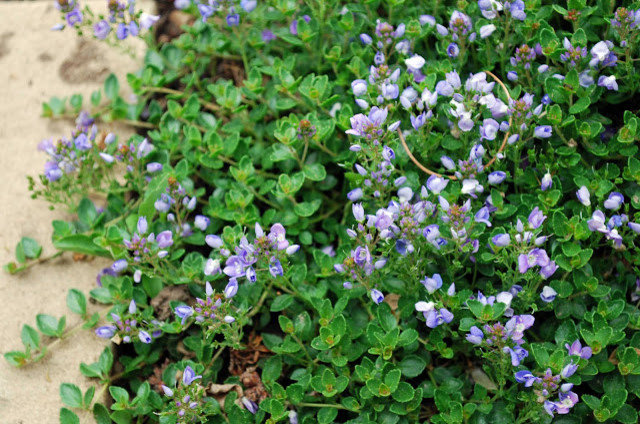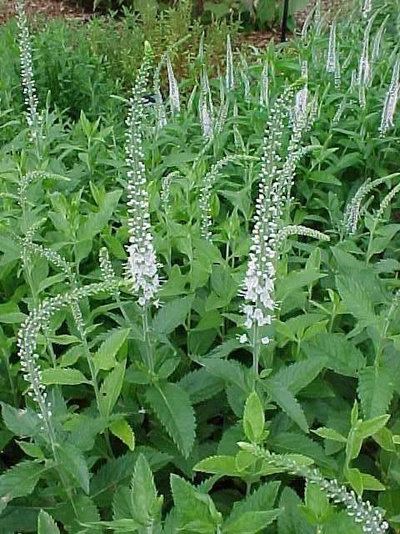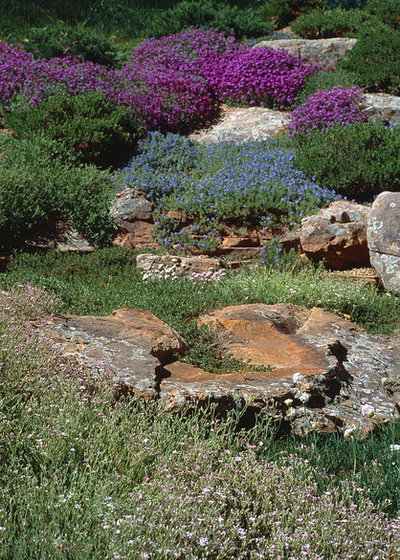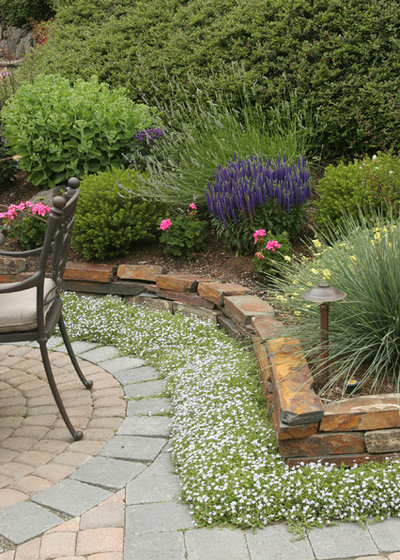Veronica is a large genus of herbacious perennials that has something for everyone — multiple flower colors, multiple foliage textures and a variety of forms. Whether you need an upright accent in cool white or a durable, evergreen ground cover, Veronica, or speedwell, may be just the ticket.
 Botanical name: Veronica
Botanical name: Veronica spp
Common name: Speedwell
Origin: Europe, Eurasia and North America
USDA zones: 4 to 11, depending on species (find your zone)
Elevation range: Up to 8,500 feet for many species
Water requirement: Moist to dry, depending on species. Those native to the Mediterranean — like silver speedwell
(Veronica incana), woolly speedwell
(Veronica pectinata) and Turkish speedwell
(Veronica liwanensis) — are quite drought tolerant.
Light requirement: Sun to light shade
Mature size: From 2 to 24 inches tall
Benefits and tolerances: Attractive to birds and butterflies; deer resistant; very floriferous when in bloom; either tall spikes — like
Veronica spicata 'Icicle' — or low, dense mats feature pale blue to blue-purple, white or pink flowers.
When to plant: Spring to fall
Seasonal interest: Blooms in spring and summer and into early fall, depending on the species; regular deadheading may encourage reblooming; many of the low-growing, ground cover speedwells have evergreen foliage.
Shown: Turkish speedwell
(Veronica liwanensis)

Missouri Botanical Garden
Distinguishing traits. Plants in this genus are either upright and shrublike or low, spreading mats. Their attractive foliage often features a scalloped edge. The leaves may be glossy green or soft and gray, arranged in a whorl on the stem, adding textural interest to the garden.
Shown: White spike speedwell (
Veronica spicata 'Icicle')

MARPA DESIGN STUDIO
How to use it. Taller varieties of speedwell, like
Veronica spicata or
V. austriaca 'Crater Lake Blue' look beautiful in a mixed border. Pair them with grasslike foliage plants — daylilies, red hot poker, spiderwort (
Tradescantia spp) etc. — or plants with large foliage, like sea kale (
Crambe spp), mullein (
Verbascum spp) or Lady's mantle
(Alchemilla mollis).
Shown: Catsfoot in the foreground, purple flowering rock cress and blue flowering speedwell

Classic Nursery & Landscape Co. / Alan Burke, asla
Plant low-growing speedwells as a living-mulch ground cover in a shrub border or flowing between boulders in a rock garden.
Planting notes. Speedwell is easily grown in average garden soil that is well drained.
Shown: Dark blue spike speedwell (
Veronica spicata 'Royal Candles'), blue star creeper, tall sedum and annual geranium (pink flowers)





